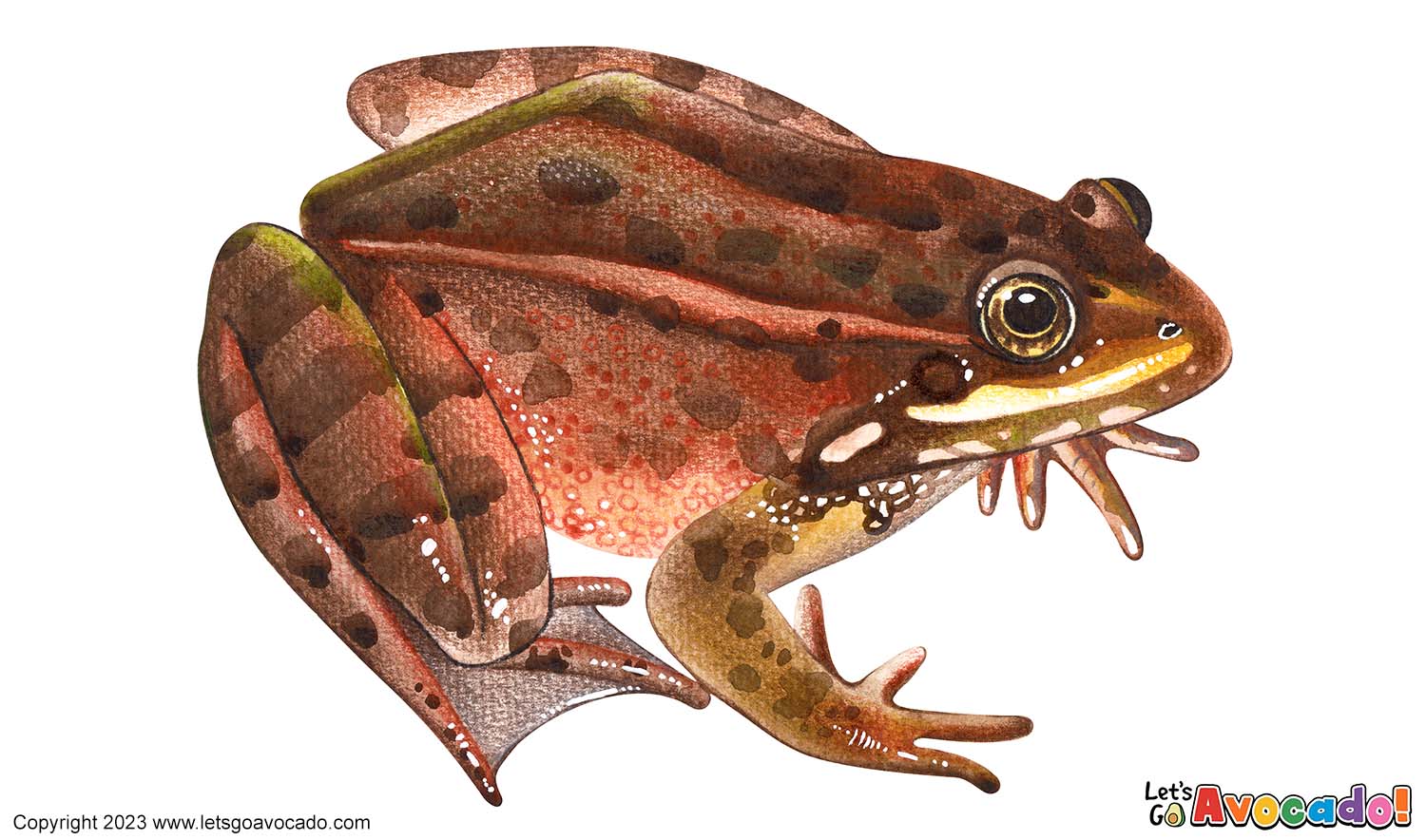

Oregon Spotted Frog
Spotted Frog
Rana pretiosa
This page may contain affiliate links.
Read our disclosure and privacy policy here.
The Oregon Spotted Frog (Rana pretiosa) is a fascinating amphibian native to the Pacific Northwest region of North America. It is a medium-sized frog with a unique appearance characterized by its spotted skin, ranging in color from light to dark brown or green. They are often recognized for the distinct dark spots on their back and sides, which can be variable in shape and size. Adult frogs can reach a length of about 2.5 to 4 inches (6 to 10 centimeters). These frogs inhabit a variety of aquatic habitats, including wetlands, marshes, and slow-moving streams. They are known for their affinity to areas with dense vegetation and shallow water, where they can find shelter and food. The Oregon Spotted Frog has a gentle and secretive nature, often hiding among vegetation or submerged in water to avoid predators. They have a diverse diet that includes insects, spiders, worms, and other small invertebrates. Their lifecycle involves undergoing metamorphosis from tadpoles to adults, where they transition from aquatic to terrestrial life. The Oregon Spotted Frog is classified as a threatened species, facing population declines due to habitat loss, pollution, and predation by non-native species. They play an important role in their ecosystemsAn ecosystem is a community of living organisms, like insects and birds, and non-living components, like water and rocks, that interact with each other in a specific area. Learn More by controlling insect populations and serving as a food source for other animals. While they do not possess toxins in their skin for defense, they rely on their camouflage and habitat preferences to avoid predators.
Oregon Spotted Frog

There’s a lot to explore right where we are, in our own neighborhoods and backyards! Join us while we get off the couch and explore the everyday wonders of nature, science, space, engineering, art, and anything else we stumble upon during on our adventures.







